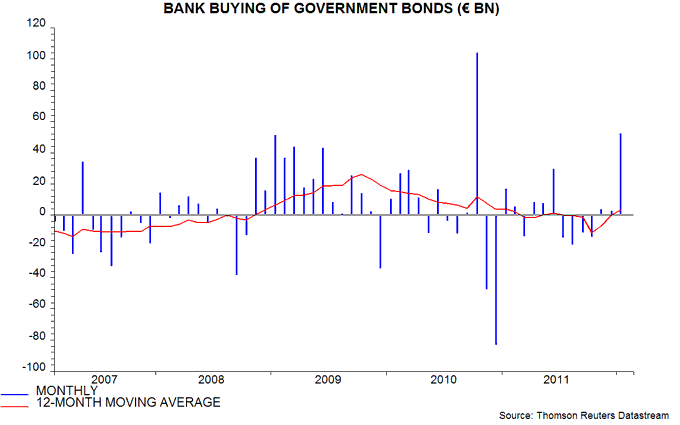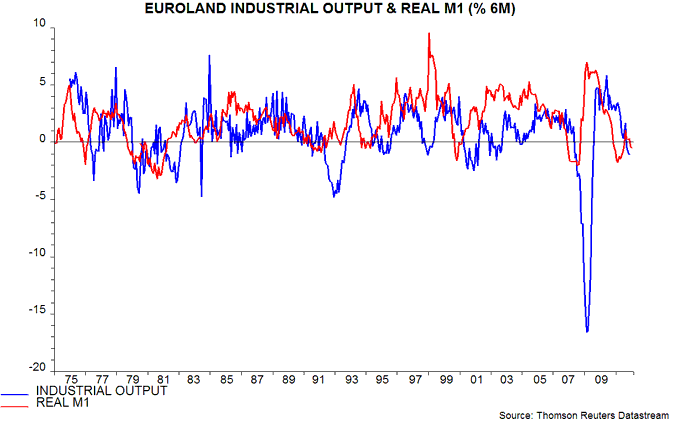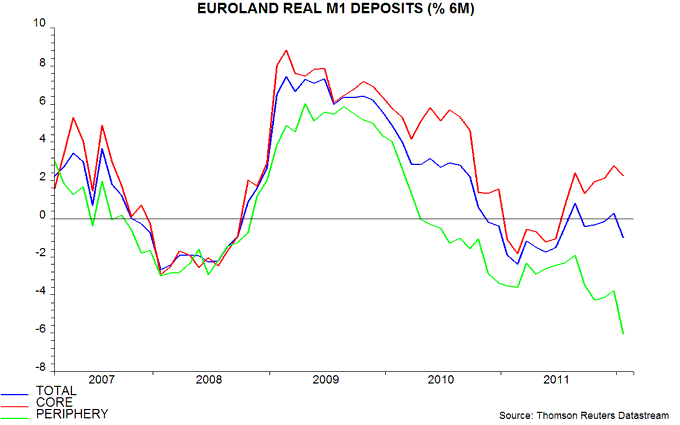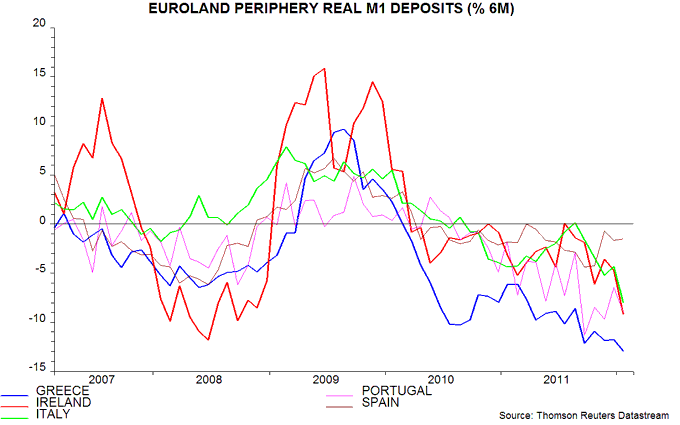A provisional verdict based on today’s money supply numbers for January is that the Draghi bazooka has succeeded in stabilising bank balance sheets but has yet to lay the monetary foundation for an economic recovery. Peripheral monetary indicators, indeed, have deteriorated further, suggesting a faster contraction of economic activity.
The stabilising effect of the bazooka is evidenced by a €68 billion, or 0.7%, rise in broad money M3 in January, reversing falls in November and December. This reflected the sovereign carry trade: banks bought €52.3 billion of Eurozone government bonds, the most since October 2010 and up from €2.7 billion and €3.7 billion respectively in December and November – see first chart. (These numbers exclude the ECB’s purchases under the securities markets programme and are not seasonally adjusted.) As expected, the biggest buyers were Italian and Spanish banks, whose holdings rose by €28.4 billion and €24.4 billion respectively, presumably reflecting purchases of local debt.
The M3 rebound, however, was not mirrored by narrow money M1, which rose by only 0.1% last month following a 0.2% December decline. M1 is a better economic leading indicator than M3, probably because consumers and firms shift money into more liquid forms before increasing spending. The six-month rate of change of real M1 slipped further to -0.5% (not annualised) in January from -0.3% in December – second chart. This measure had turned positive between August and November last year, signalling less negative economic news in early 2012, allowing for the usual six-month lag; the recent decline implies deteriorating prospects for mid 2012.
M1 comprises currency in circulation and overnight deposits. The ECB publishes a country breakdown of deposits but not currency. A 1.0% (not annualised) fall in Eurozone real M1 deposits in the six months to January conceals a solid 2.2% rise in “core” economies (defined here as Austria, Belgium, France, Germany, Luxembourg and the Netherlands) offset by a 6.1% plunge in the “periphery” (i.e. Greece, Ireland, Italy, Portugal and Spain) – third chart. The latter represents a new low, suggesting that the rate of peripheral GDP contraction will accelerate in mid 2012.
The peripheral country decomposition, as expected, shows the largest decline in Greece (-12.9%, not annualised) but Ireland is now as weak as Portugal (-9.2% versus -9.0%), with Italy not far behind (-8.0%); Spain’s contraction, oddly, is milder (-1.5%) – fourth chart. In the former cases, these are depression-scale declines, although normal monetary relationships may be breaking down in the context of rising EMU dissolution risk.



